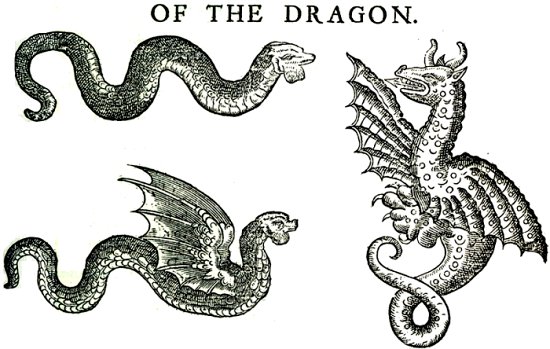Jacobean Evolution
Today, beasts and Bibles. The University of Houston's College of Engineering presents this series about the machines that make our civilization run, and the people whose ingenuity created them.
I've just finished the book: God's Secretaries -- Adam Nicolson's fine story of the writing of the King James Bible. Nicolson begins as Queen Elizabeth dies in 1603, and King James of Scotland is made King of Great Britain. A year later, James set up a fifty-man task force to create a new translation of the Bible. It was formed of six groups that translated sections of the Bible for approval by the whole. They finished in 1611.
The group doing the Book of Genesis worked out of Westminster Abbey. Now I find that, while they were at it, a cleric named Edward Topsell pointedly dedicated his wildly fanciful book, A History of Foure-footed Beastes, to the Dean at Westminster.
Topsell provides one glimpse of the way scholars viewed the Creation at that time. He drew heavily on other writers, but then originality was a sin of pride. His aim was not to be original, but to show God's purpose in creating the various beasts. He explains how each creature -- bear, ape, unicorn -- was made to serve human needs.
Topsell mirrored the thinking of the translators, who were his superiors in the Church. Yet that thinking had greater dimensions of honest inquiry than we first might think. Just look at the Bible they produced. It informs evolutionist believers just as surely as it informs creationists. Its rich metaphorical language transcends the sectarianism dividing the people who read it.
We see that in another book that came out two years before Topsell's odd but orthodox treatise. Written by one of the most conservative translators, a gloomy bishop named George Abbot, it has the modest title, A Briefe Description of the Whole Worlde.
Abbot writes colorfully, enthusiastically, and sometimes prejudicially, about all the known cultures. Yet, and this is the key, he knows that cause and effect are shaping all things. We catch a glint of Abbot's saving brilliance when he talks about the variety of animals. He says,
Often times new and strange shapes of Beasts are brought [forth because] the Countrie being hott and full of Wildernesses, which haue in them little water, the Beastes of all sortes are enforced to meete at those few watering places that be, where often times contrary kinds haue coniunction the one with the other: so that there ariseth new kinds of species, ...
Two-and-a-half centuries later, Darwin would complete that thought.
King James had been determined to quiet the squabbles among Anglicans, Puritans, Presbyterians, Catholics. He failed. Nor did his Bible have much effect in the short term. It gained its footing later, during the Restoration -- after Civil War and Cromwell.
The King James Bible, with its extraordinary oral rhythm and balance, has, ever since, tuned our ears to the English language at its best. Its words flowed from people whose sense of holy authority was mixed in with a passion for inquiry. And that is why it rides so majestically above the endless strife waged by people determined to extract their own beliefs from it.
I'm John Lienhard, at the University of Houston, where we're interested in the way inventive minds work.
Nicolson, God's Secretaries: The Making of the King James Bible. (New York: Harper-Collins, 2003).
E. Topsell, Topsell, E., The History of Four-Footed Beasts and Serpents and Insects. New York: Da Capo Press, 1967. (This is a facsimile of the original edition: London: Printed by William Iaggard, 1607).
E. Topsell, The Historie of Serpents or The second Booke of Liuing Creatures: ... , New York: Da Capo Press, 1973. (This is facsimile of the original edition: London: Printed by William Iaggard, 1608).
It is worth noting that Topsell's first volume, which I mention above, is a reworking, expansion, and popularization of a late 16th-century bestiary written by Konrad Gesner, Historiae Animalium Liber Primus. Topsell's second volume is likewise derived from the work of Thomas Moffett, Insectorum sive minimorum animalium theatrum).
Topsell's marvelous illustrations may seen at: https://info.lib.uh.edu/sca/digital/beast/index.html These are from the University of Houston's 1658 edition of the work: E. Topsell, The history of four-footed beasts and serpents ... collected out of the writings of Conradus Gesner and other authors. Whereunto is now added, The theater of insects; or, lesser living creatures ... by T. Muffet. (London : Printed by E. Cotes, for G. Sawbridge, T. Williams and T. Johnson, MDCLVIII).
I am grateful to UH Jacobean scholar Cathy Patterson for her valuable counsel.

Topsell's image of a dragon (From The Historie of Serpents, 1608)